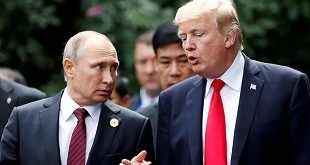
By Juma A. Okuku
In the last 20 years, President Museveni has continuously talked about the need for Uganda to industrialise so as to be able to provide for its people. In this five-part insight, Juma A. Okuku looks at why we have failed so far and what we must do to succeed. The first part was published last week.
One of the fundamental institutional reforms that propelled later industrialization in East Asia, were the agrarian reforms. Major land reforms were carried out in Japan, Korea and Taiwan after World War II. Let us focus on South Korea.
South Korea had centuries-old landlord class. After the Korean war 1950-53, there were massive land reforms. Landlords received state bonds and converted them to industrial and general commercial wealth.
The land-to-the-tiller programme in South Korea had long-run effects. First, the reform redirected idle capital away from speculation in land to manufacturing. Second, it relieved the bottle-neck in food supply which, in turn dampened inflationary pressures. Third, in conjunction with an expanding education system, growing urban unemployment, land reforms provided industrialization with a plausible vision, a South Korea of equal opportunity. Fourth, the local agrarian power of landlords was destroyed paving way for modernizing bureaucracy to push through its agenda transferring resources out of agriculture into industry. Fifth, efforts were made to prevent the revival of a landlord system in future. Restrictions were imposed on the transfer of land. Sixth, there was enhanced agricultural productivity through improving farm technology. Finally, in the 1960s, a cheap, educated labour force became the most important contribution the agricultural sector made to rapid industrialization.

The agrarian reforms had some difficulties. First, the new farmers who could not manage to pay back for their newly acquired land, yearly 30% of crop harvest to the government, had to give up the land. Many out-migrating people, lacking any significant industrial employment opportunities, in the 1950s and 1960s, ended up as lumpen-proletariat in urban shanty towns. These provided cheap labour in the 1960s with the onset of EOI.
There were long term benefits of land reform: an increase in agricultural productivity, an equitable distribution of income through relatively equal access to land. This created room for the modernization of agriculture and the expansion of internal market.
Institutions of technology transfer and innovation
This is one of the critical lessons drawn from the Japanese experience. In the case of South Korea there was control over foreign capital, use of various modes of technological acquisition and establishment of institutions of technology by the state.
South Korea’s technological superiority constitutes strong confirmation of the importance of both direct and indirect state initiatives in technological acquisition. South Korea had a particular relationship with Foreign Direct Investment (FDI). The objective of this relationship was to build an autonomous technological capacity. First, technological transfer was greatest in those traditional industries where there was already substantial accumulated local capacity such as textiles. South Koreans simply bought the technology and applied it themselves. Second, when FDI was chosen, South Koreans localized the technology whenever possible to improve their capabilities.
Third, through legal and bureaucratic mechanisms, the state had control over the inflow of foreign capital and technology. Under the Foreign Capital Inducement Act (FCIA), 1961, government guaranteed the repayment of all loans flowing into South Korea. But the loans had to flow to the industries targeted by state development plans. The state also ensured that this flow enhanced technological capacities of domestic firms. The state had to deliver the necessary components to domestic producers rather than to allow foreign investors to provide the entire package of production. The state often restricted FDI and assisted domestic firms to acquire necessary capital and technology wherever a targeted sector could be developed without foreign ownership. Finally, to the South Koreans, foreign capital loans were viewed as a more desirable form of capital penetration than FDI. The loans could be channeled to the local producers by the state’s financial institutions.
South Korea applied several modes of technological acquisition. First, through technology licensing agreements. With the right combination of loans and access to technology, rapid economic expansion was accompanied by maximum levels of domestic ownership and control over production apparatuses. Second, South Koreans purchased overseas companies to acquire skilled workers, managers, equipment and distribution outlets. For instance, the purchase of small US Silicon Valley companies. Third, through strategic partnerships embedded in joint ventures in both technological development and ownership. FDI that would compete with local producers was rejected.
Fourth, technology acquisition through several informal means. Foreign educated research personnel have been important to the development of South Korea’s research capabilities. The policy of sending graduate students abroad for further training had its origins one year after the end of the Korean war of 1950-53. South Korea has also depended on foreign consultants. Imitation, copying and reverse engineering have all played a part in technological acquisition.
Fifth, through Original Equipment Manufacturer (OEM), the local firm produces a good to the exact specification of the foreign company. The foreign firm then markets the product through its own distribution channels, under its brand name. OEM often involves the foreign partner in the selection of equipment, training managers, engineers and workers. The result was spillage of technological knowledge. This was perhaps the most important channel for technology acquisition in East Asia during the 1980s.
In Korea, considerable efforts were made by the state to develop the country’s own research institutions of science and technology. Korea Institute of Science and Technology (KIST) was set up in 1961 as a multi-disciplinary industrial research institute. Its key roles were to bring in foreign technology, to assist in commercialization of these technologies, to create a climate for Research and Development (R&D), importing, assimilating, disseminating foreign technologies, providing technical assistance to Korean firms and undertaking market research.
In 1976, government also established a new public research institution – the Korea Institute of Electronics Technology (KIET) charged with the responsibility for planning and co-coordinating semi-conductor research (R&D). Â
Public-Private Partnership
Several relationships were established between the government and social coalitions through their business associations. This meant dense and more intimate ties between bureaucrats and society. The information was solicited from industries about their operations at the firm levels. This led to easy implementation of industrial policy.
The involvement with the private sector enabled the state to have genuine capacity to formulate long-term goals. The connections magnified the state’s capacity to make informed decisions and its logistical ability to carry them out.
To succeed, the state must possess autonomy – the ability to act independently of the wishes of non-state actors and social groups. Through business groups, producers associations and public-private consultative bodies, the states implemented national industrial policies. It is the autonomy of East Asian states that enabled them to be selective about which group to connect with. On occasions, the state could strike out on its own without the support of any groups. Autonomy allowed the states to minimize “capture†by powerful private sector rent-seeking interest groups. This is one of the secrets for the successful industrialization of East Asian countries. Finally, there was a definite transition from ISI to EOI in East Asia.
Export Oriented Industrialization (EOI)
The success of industrialization in East Asia has been attributed to EOI. Given the startling success of East Asian countries, EOI proponents hold this alternative as the “pathway†that should be followed by all countries wishing to industrialise. The assumptions if this prescription includes: 1) that market forces determine EOI and the state stays out of the way. 2) That export penetration enables firms to overcome the constraints on sales, lead to productivity gains and generates foreign exchange. 3) That if EOI attracted FDI there will be further benefits that go beyond the monetary value of increases in exports.
Two questions arise: 1) whether successful EOI was due to such policy prescriptions and 2) whether EOI can provide a successful strategy for all countries as many of the proponents suggest?
To categorise the EOI strategy as non-interventionist is not accurate. The association of export-oriented strategies with free-market policies is likewise unfounded. The historical, social and political contexts of East Asian countries determined the success of EOI. Very conscious and directed set of economic policies including uniform exchange rates, tax exemptions for exporters, reduced prices for inputs and access to credit for investment were implemented by these countries. These countries development was a result of a set of international circumstances, particularly relatively favourable access to international markets and international finance – “Euro-dollar†market in the 1970s. This enabled them to escape from the IMF/ World Bank conditionality on loans unlike other Third World countries. They had access to the rich American and Japanese markets and cold war military finances.
There is a tendency to view ISI and EOI as mutually exclusive. ISI must be seen as a precondition for successful export-led growth. Successful exporters were countries in which import substitution was relatively successful in building up an industrial structure, which was not merely limited to local production.
The attribution of the success of EOI to free markets is a misrepresentation of the actual experience of East Asian countries. These countries actually pursued an infant based export-oriented, “protected export promotion†strategy. It was not the commonly perceived static comparative advantage – based “export promotionâ€.
These institutions and policies were underpinned and buttressed by an overwhelming ideology of economic nationalism – the belief in the use of state power to politically construct the competitive advantage of the national economy.
There were no miracles. It was a planned and orchestrated process. The experience of Africa was fundamentally different from these.
-Next week, why did industrial transformation fail in Uganda and Africa?
****
Dr. Juma Anthony Okuku is a lecturer in Political Economy at Makerere University, Kampala.
 The Independent Uganda: You get the Truth we Pay the Price
The Independent Uganda: You get the Truth we Pay the Price



